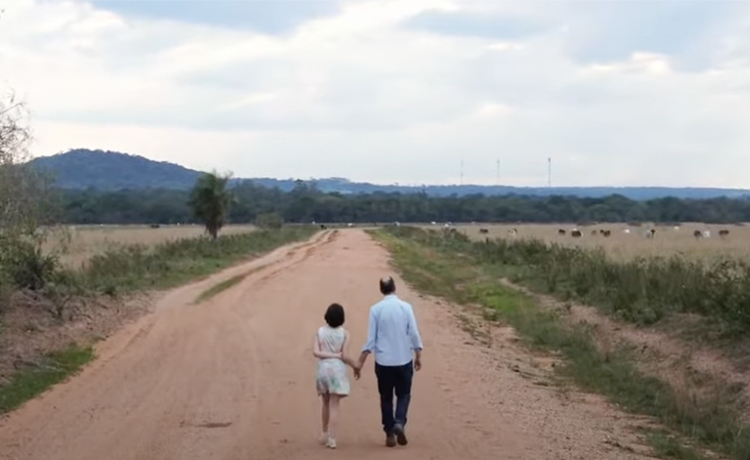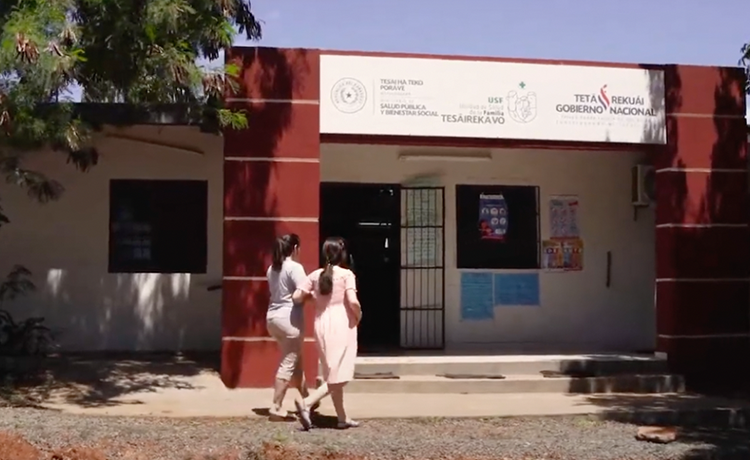News
Childhood cut short: Three stories of adolescent pregnancy from Paraguay
- 28 November 2023
News
ASUNCIÓN, Paraguay – No one seemed to mind when Noelia* got a boyfriend. Nobody in her family said a word, even though her boyfriend was 18 years old and she was just 13.
When Noelia went to see the cardiologist who had cared for her since birth through the public health service, the doctor explained the risk of pregnancy to her, but not how to prevent it. Although her mother accompanied her to medical appointments and knew about her daughter’s relationship, she did not express any concerns. Nor did anyone at school explain sexual abuse or birth control methods to her.
Soon, Noelia stopped going to school. Then she stopped going to the health service. She was pregnant.
Six months into her pregnancy, Noelia was rushed to the hospital with congestive heart failure. Both Noelia and her fetus lost their lives.
One in every four cases of maternal death in Paraguay is a girl between the age of 10 and 19 years old. Girls aged 15 to 19 who become pregnant in Paraguay face double the risk of maternal death, while for girls aged 10 to 14 the risk is quadrupled. Babies born to adolescent mothers are also 50 per cent more likely to die during their first year of life.
Although some progress has been made, the country’s adolescent fertility rate remains the highest in the Southern Cone, at 72 births per 1,000 women aged 15 to 19 years old. This rate is 50 per cent higher in rural areas and 2.5 times higher for indigenous adolescents.
With one of the highest maternal mortality rates in the region, paired with high rates of poverty and inequality, adolescent pregnancy presents an urgent challenge for communities and families in Paraguay – sadly with often fatal consequences for young girls.

Isabel*
Isabel was 13 years old when she became pregnant. Although the man who lived with her was 40 years old, nobody reported the situation as abusive.
When the time came to give birth, Isabel faced complications and was forced to undergo a Caesarean section. In the middle of the procedure, her heart stopped.
High rates of adolescent pregnancy are largely a result of limited sexual and reproductive health services and the lack of comprehensive sexuality education in the formal education system. Without adequate resources, communities lack the tools needed to protect girls and adolescents from harm. As a result, adolescent girls are often pressured to marry and bear children: In 2017, almost 40 per cent of girls under age 15 in Paraguay were in union at the time of giving birth.
UNFPA, the United Nations sexual and reproductive health agency, is working to increase the availability of culturally sensitive information on sexual rights, contraceptives and other birth control methods for vulnerable groups in Paraguay, including adolescent girls, rural communities and people living in poverty.
As a result of a three-year project, which ran from 2017 to 2020 with the support of UNFPA and the Government of India, the Government of Paraguay has established a national programme to address sexual abuse and adolescent pregnancy in the country. The initiative is led by the Ministry of Public Health, the Ministry of Children and Adolescents, the Ministry of Education and Sciences and the Ministry of Labor, Employment and Social Security.

Miriam*
When public health officials visited Miriam's house, her grandmother told them nothing was amiss. Rumours had begun to circulate about Miriam’s well-being, but her grandmother denied that they were true.
The same public health officials visited Miriam at school. Miriam was sick, but her grandmother said there was nothing to worry about. Her condition worsened, and soon she was referred to the public hospital with symptoms that suggested she had undergone an unsafe abortion.
Miriam died in intensive care 52 days later, just after her 14th birthday. It was never discovered who abused her, or who forced her to have an abortion.
Worldwide, 55 per cent of unintended pregnancies among adolescent girls aged 15 to 19 years end in abortions, many of which are unsafe. Unsafe abortion is a leading cause of maternal death, especially among adolescents, but this can be prevented by ensuring communities have access to adequate family planning services, comprehensive sexuality education, and culturally sensitive information on preventing gender-based violence and other harms.
UNFPA is working to reduce adolescent pregnancy in Paraguay and to keep girls safe from exploitation and harm. Girls have the right to make informed decisions about their bodies and their reproductive health. When we safeguard the right to sexual and reproductive health for all, girls can reach their full potential and help themselves, and their societies, to thrive.
Speaking on the International Day for the Elimination of Violence against Women, UNFPA Executive Director Dr. Natalia Kanem called the international community to action: “Online or off, all spaces should be free from gender-based violence. This International Day for the Elimination of Violence against Women, let us recommit to concrete actions that will protect women and girls in all their diversity. Let us recommit to building a world that is more just, inclusive and equitable, and where women and girls can live in peace.”
Find more stories of adolescent pregnancy from Paraguay here.
*Names changed for safety and privacy.